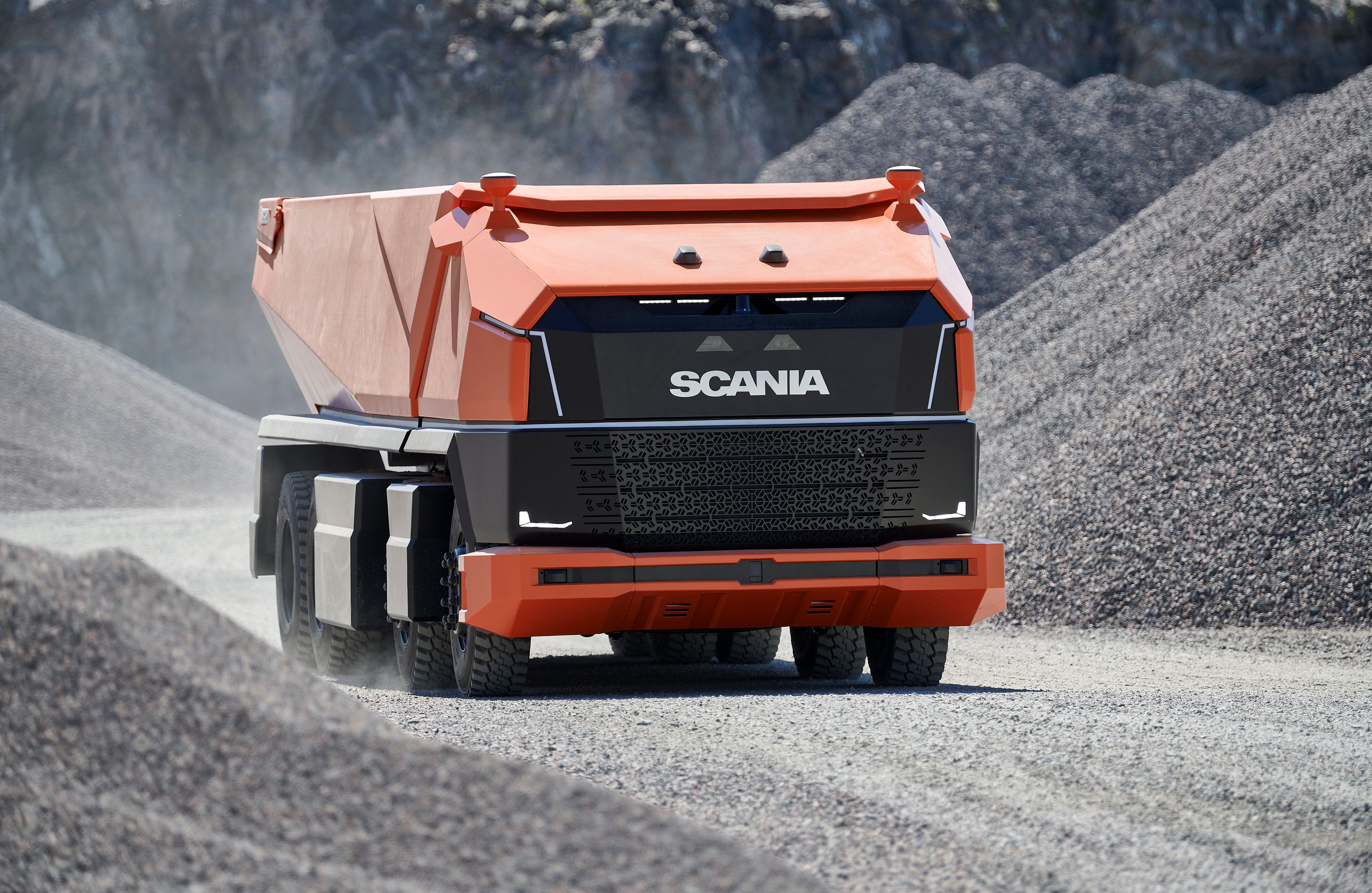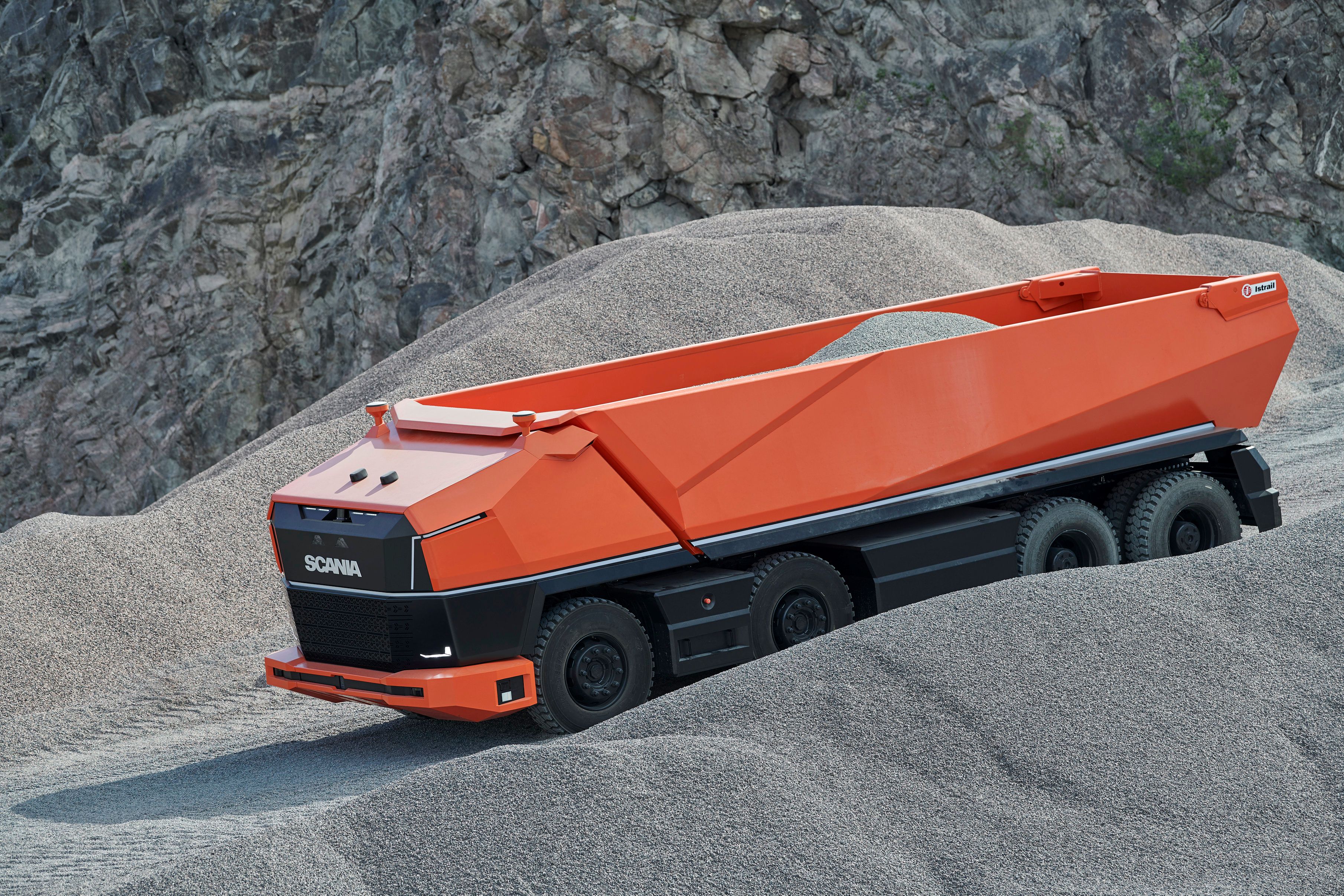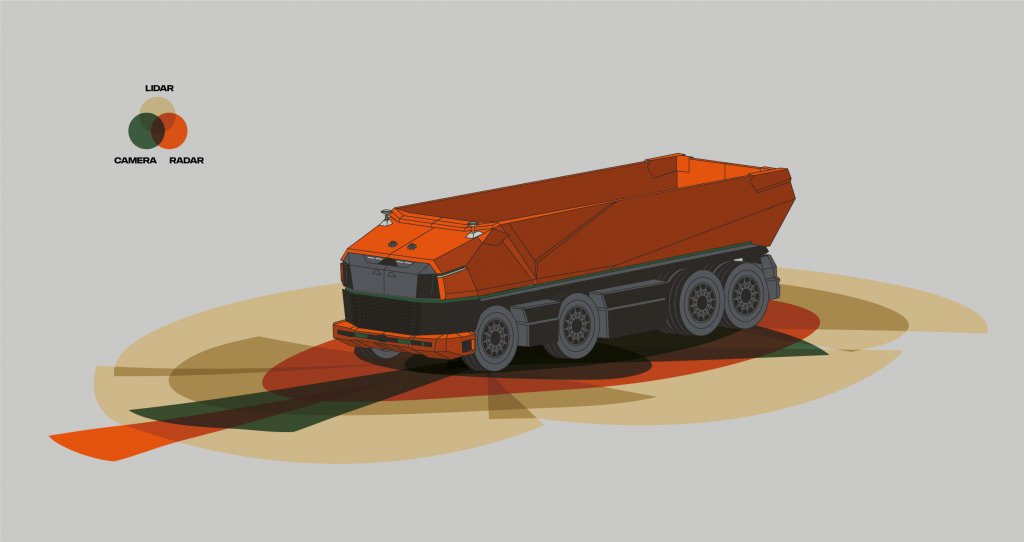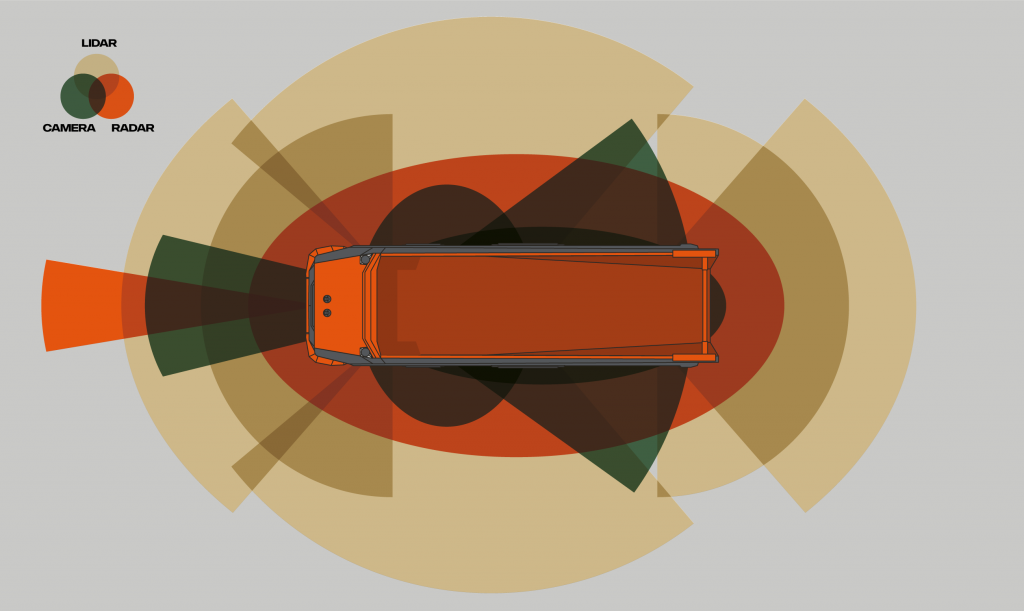The Scania AXL Concept was started from a blank sheet of paper. Scania’s designers and engineers, however, had a clear task to abide by, though: the cabin had to be driverless. Which kind of contradicted Scania’s previous projects, where the cabin had to be wrapped around the driver, with all the adjacent aspects like safety and comfort. Oh, and to make things even more complicated, the design team was given one year to come up with a viable prototype. Did we mention it had to drive itself as well?
Why Does It Look So Weird, Though?
Needless to say, the first sketches of the Scania AXL Concept looked weird, as Kristofer Hansén, Technical Manager at Scania admits. In the beginning, the AXL Concept looked either like a robot, with simple, asymmetric shapes, or adopted a smooth, streamlined designed. In the end, Scania’s designers opted for a mix of design cues so that the truck would transmit a clear message to prospective customers. That is, “here’s what a truck that works in a mine should look like.”
Xavi Carreras Castro, Scania AXL Designer>
Now, Scania calls the AXL Concept “a significant step towards the transport systems of the future.” We’re not surprised by the wording itself here, as we’ve read and heard that a lot when dealing with, you know, regular cars.
But we do appreciate that Scania learned the lesson from other carmakers playing with autonomous technology these days and understood that software is, ultimately, a lot more decisive than hardware when it comes to self-driving cars. Not to mention to a self-driving mammoth that once out of control, can wreak a lot more havoc than your econobox or even two-ton SUV. In that respect, Scania developed what it calls the Intelligent Control Environment which allows the autonomous truck to be ‘supervised’ by a logistics system that basically tells the vehicle what is has to do and how is must do it.
The biggest challenge for the Scania AXL Concept - and that’s something that’s been bugging carmakers as well - is replacing the human eye and brain with a system capable of making decisions based on the ever-changing environment around the vehicle.
Scania says that although autonomous vehicles and prototypes have been relying a lot on data gathered from cameras and radar, the latter doesn’t offer the required resolution to spot pedestrians or small objects at a distance. Cameras are also good, but a lot of software development goes into converting 2D images to 3D images. That’s where the lidar comes into play (you’ve probably heard of it before from Tesla, which places it at the core of the Autopilot).
Scania’s AXL Concept mixes all the above - that is seven cameras, radar sensors front, back and in the sides, lidar, and GPS - but in a configuration that serves the operational needs of mines. That means the system isn’t apt for public road roaming just yet.
In fact, Scania doesn’t believe that a vehicle derived from the AXL Concept will ever be fit for city driving. Every bit on information collected by the said sensors is processed inside the truck’s Intelligent Front Module - think of it as the AXL Concept’s brain. Here, data from the camera, lidar, and radar is used to generate a common view of the vehicles immediate surroundings.
Magnus Granström, Development Engineer at Scania>
There’s not much info we can provide on the concept truck’s powertrain, although Scania mentions that it runs on renewable biofuel and uses an existing platform with four axles (the first two from the front are also steering axles). That being said, you can have a look at the video below, which will provide a better glimpse at some of the behind-the-scenes processes and methods Scania’s team of engineers and designers had to use to bring the AXL Concept to its current state.
Self-Driving Abilities Entail an Army of Sensors, Radars, and Cameras. The Scania AXL Concept Makes No Exception




